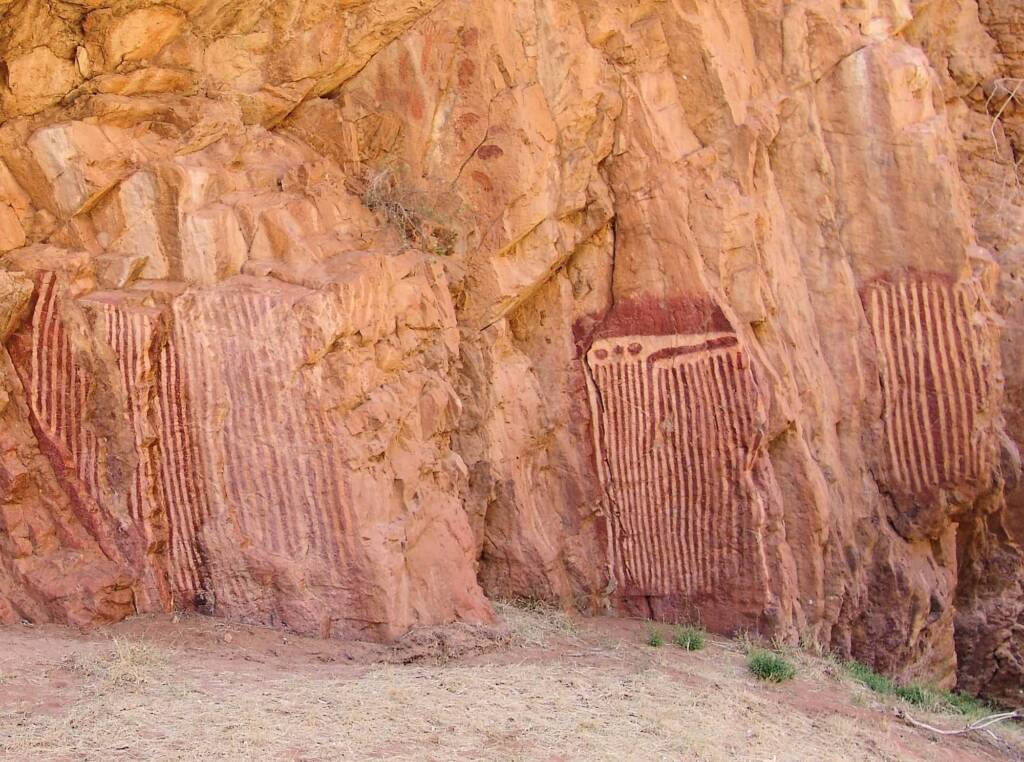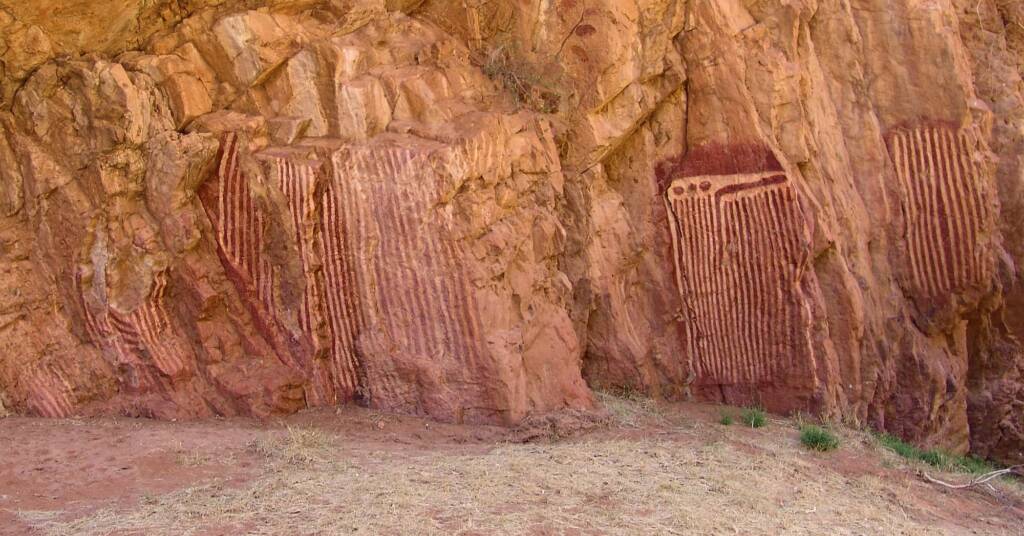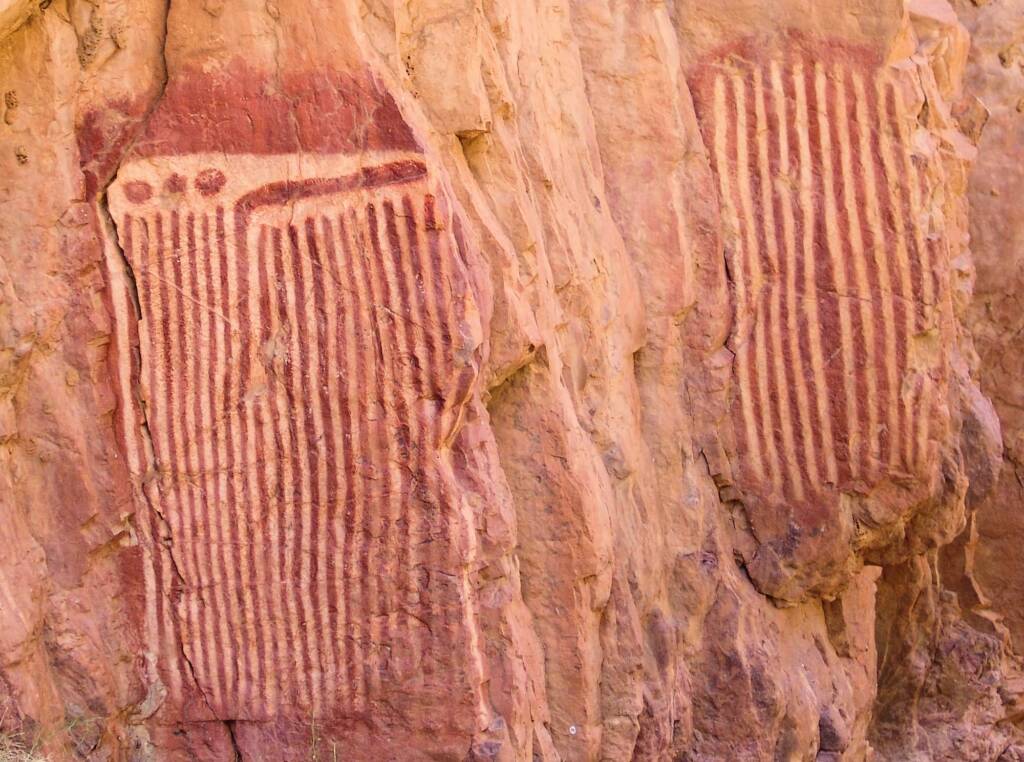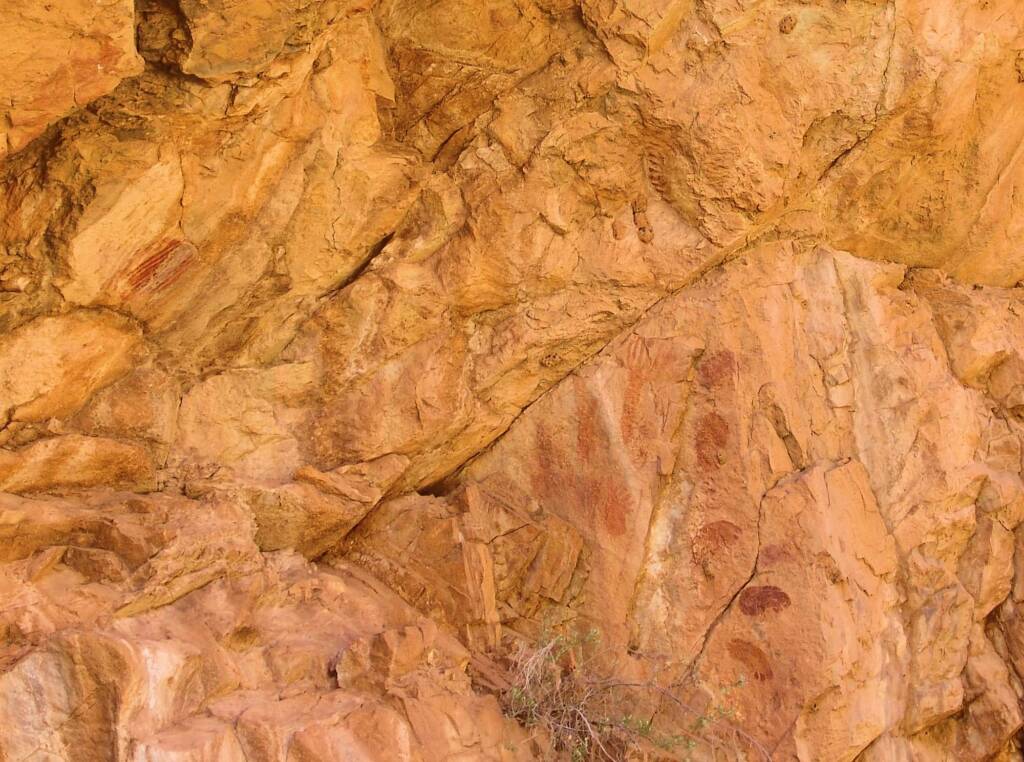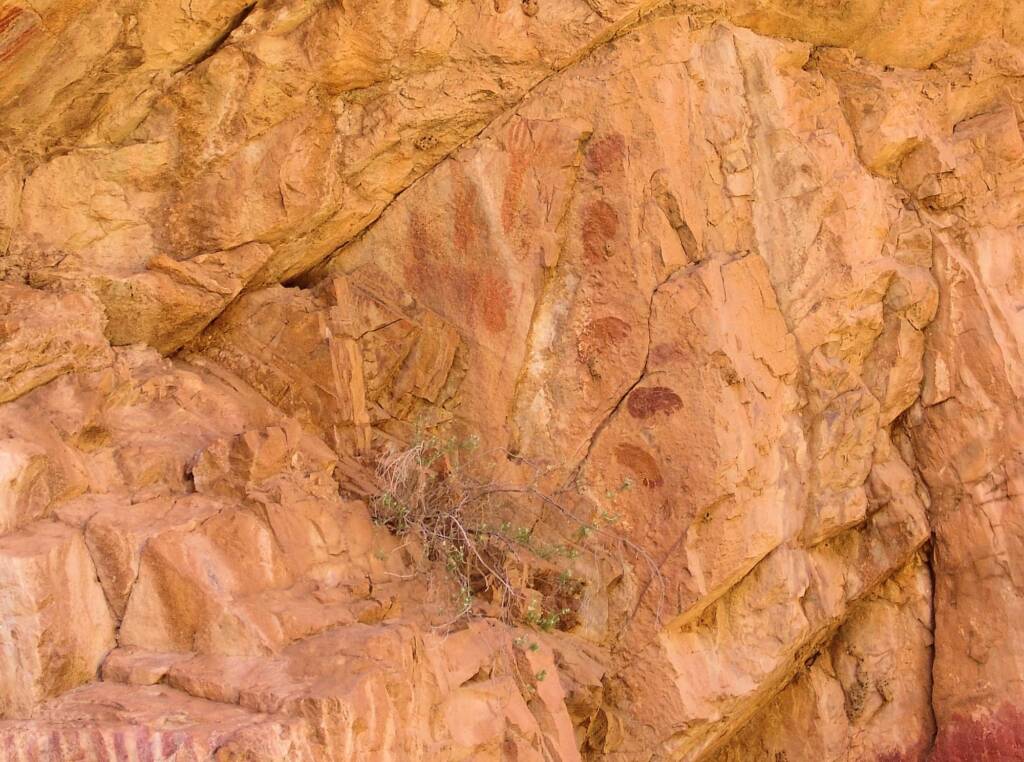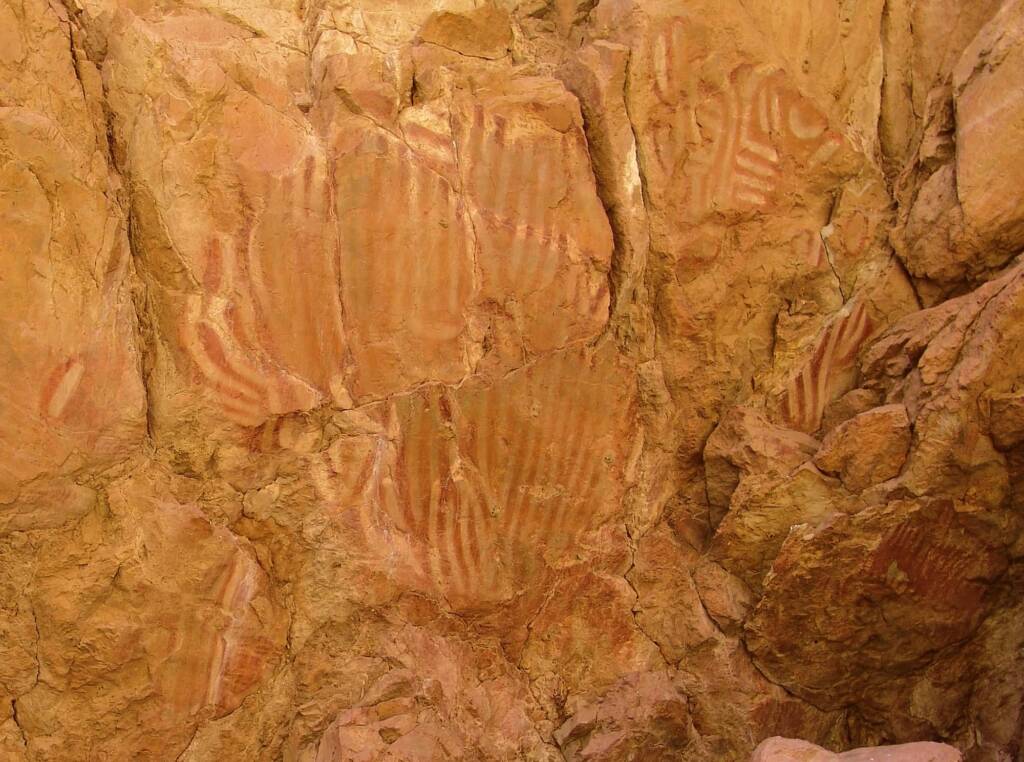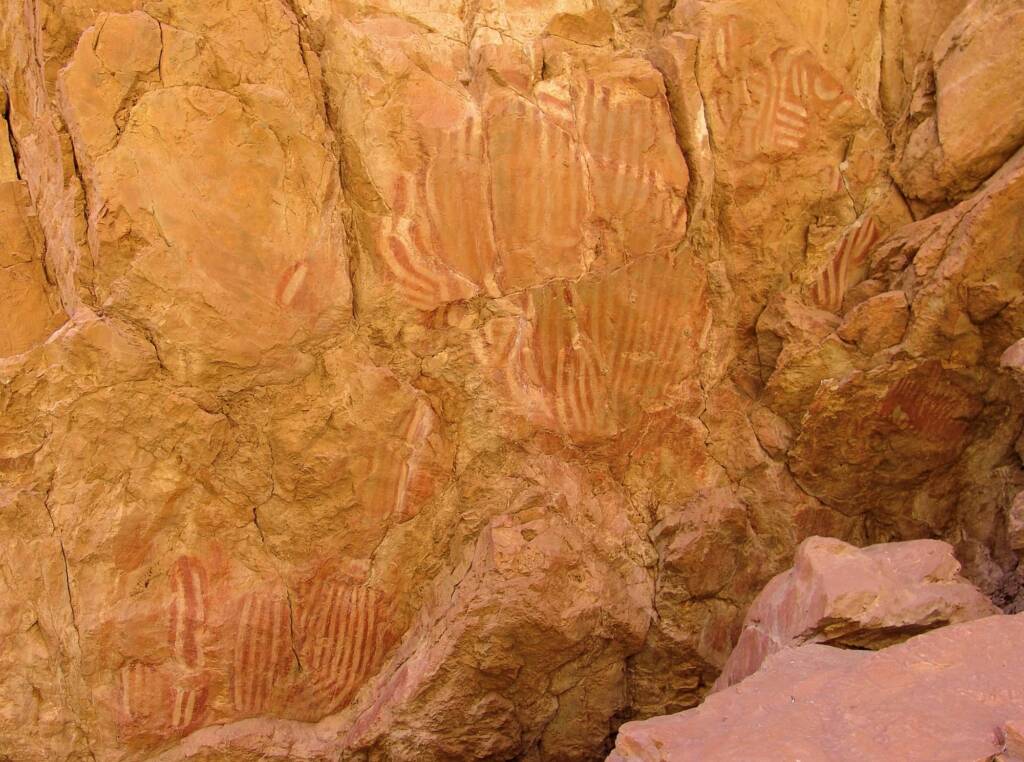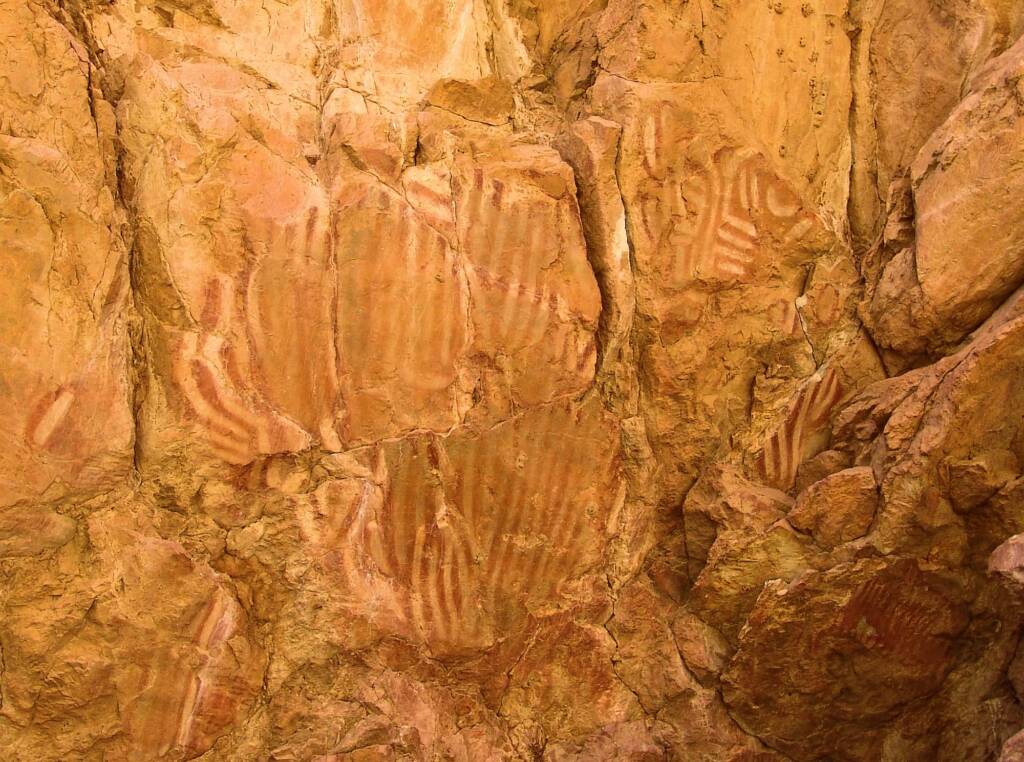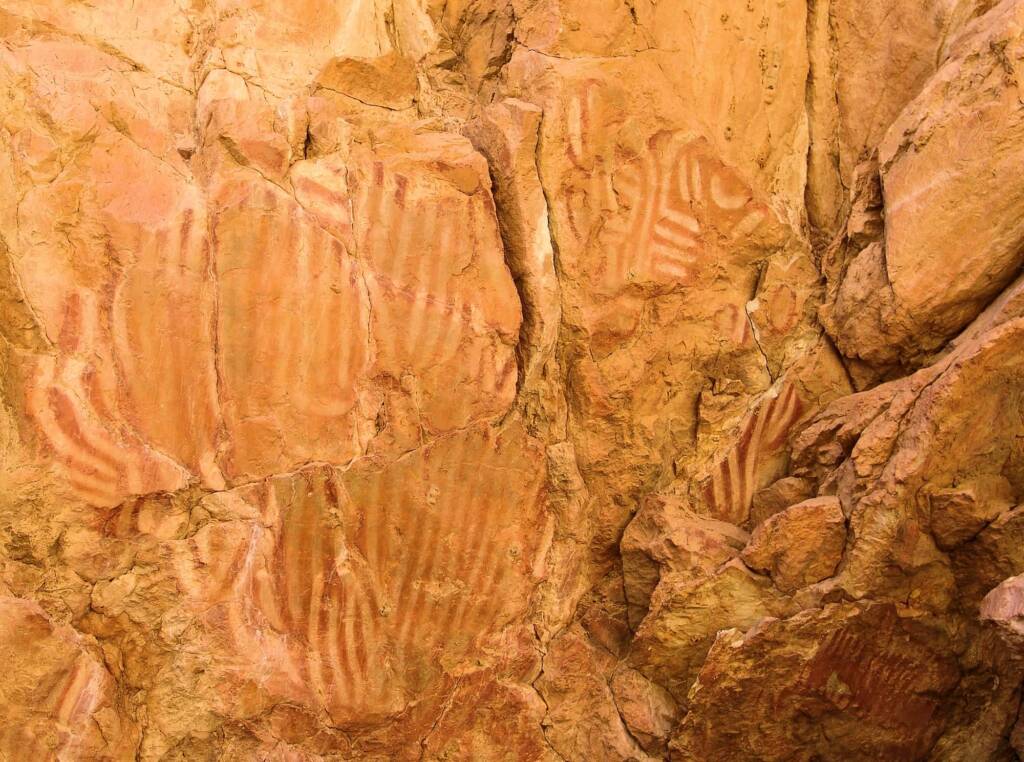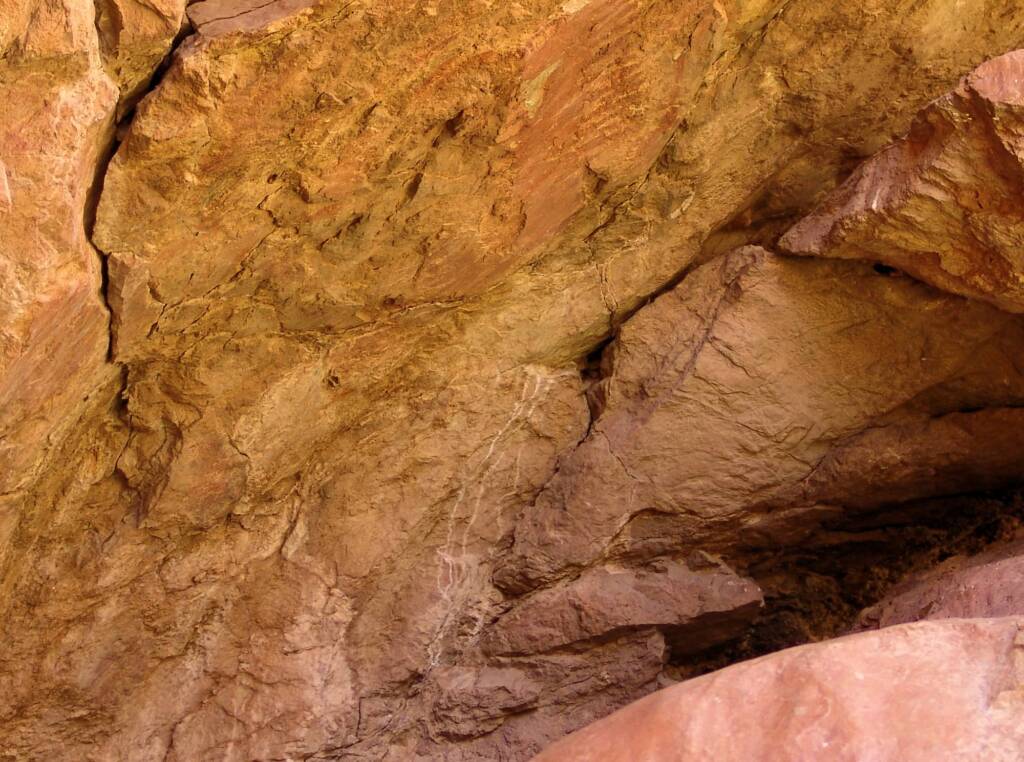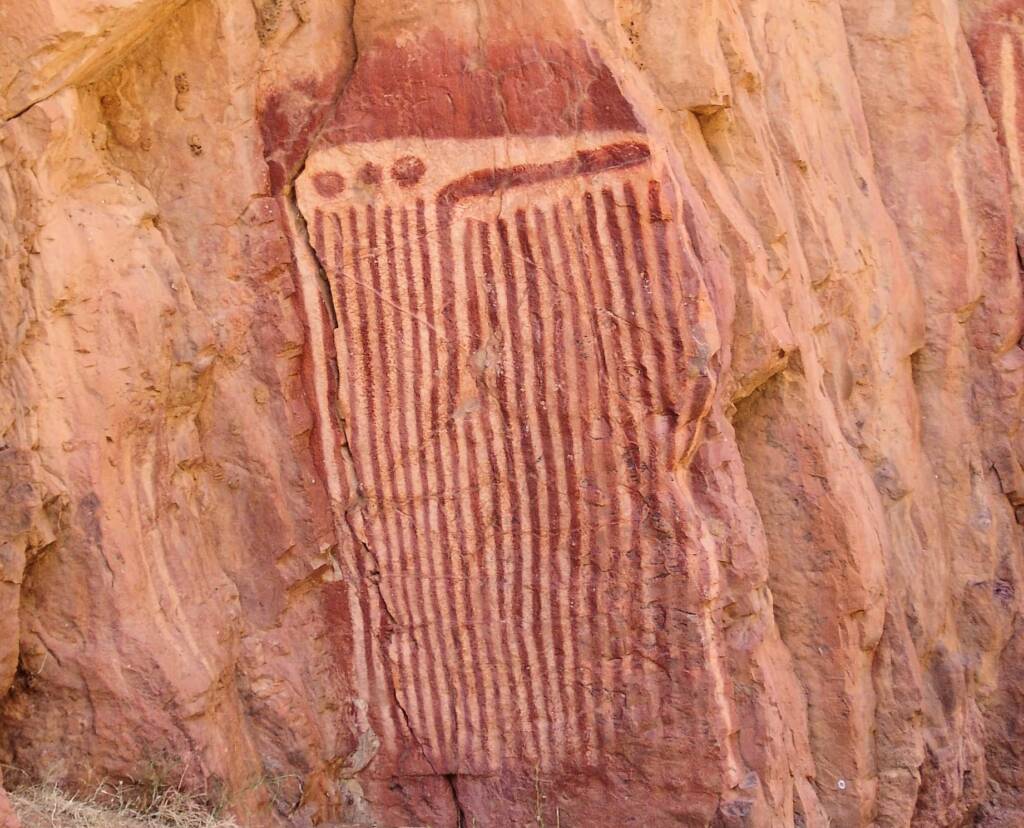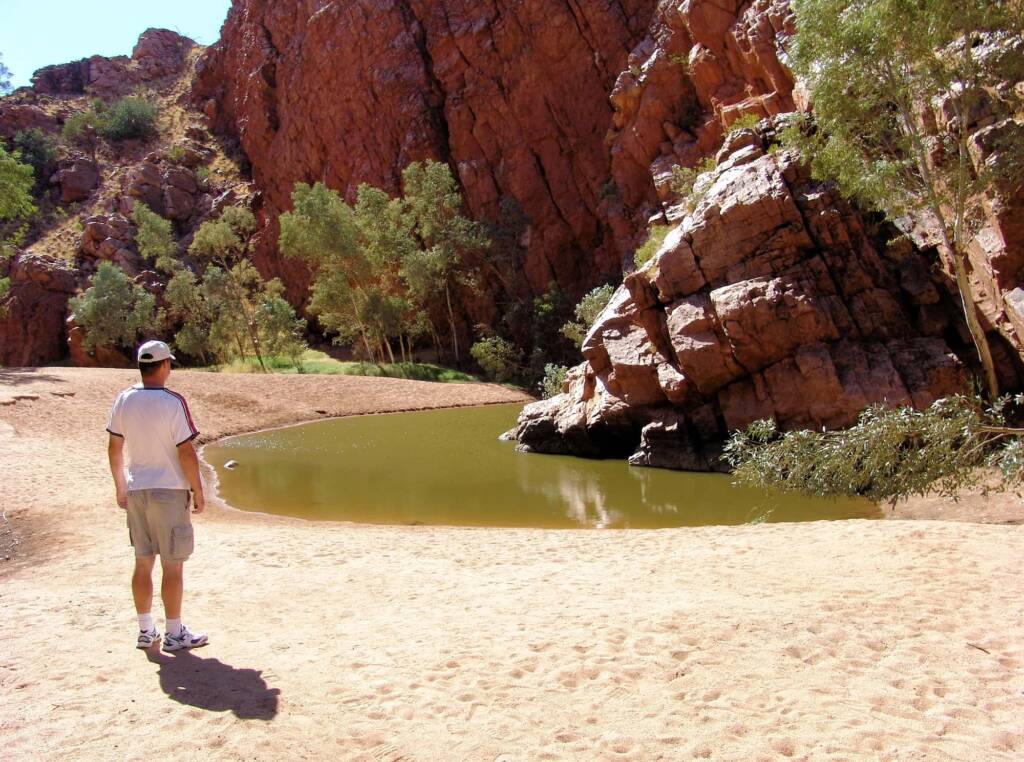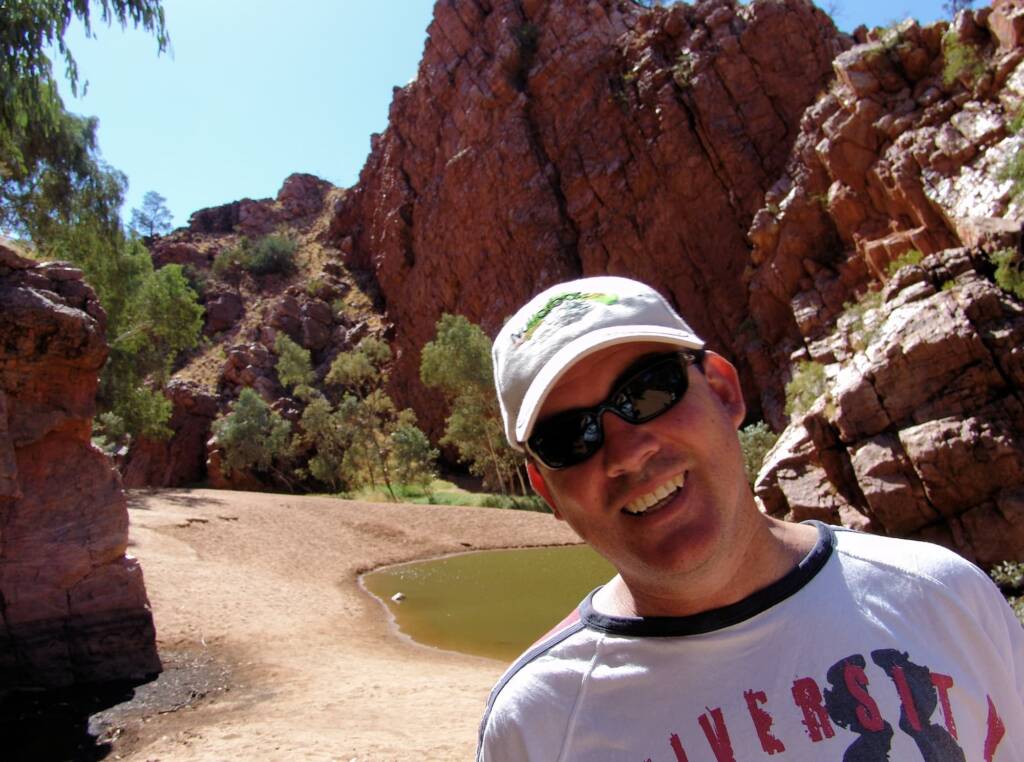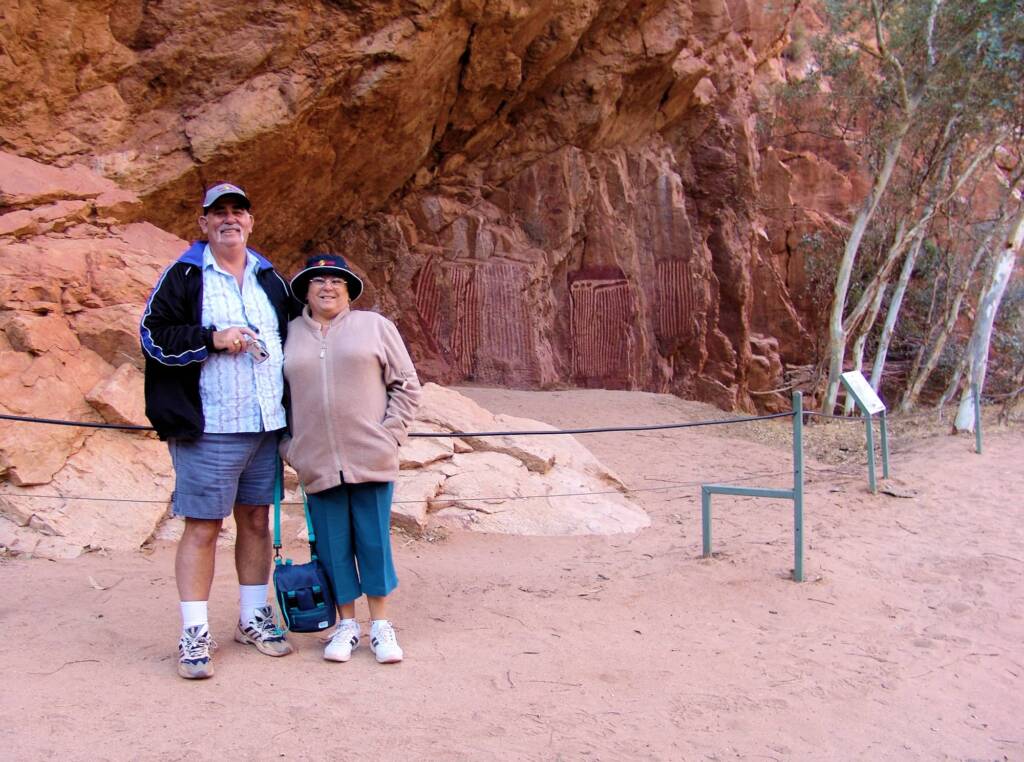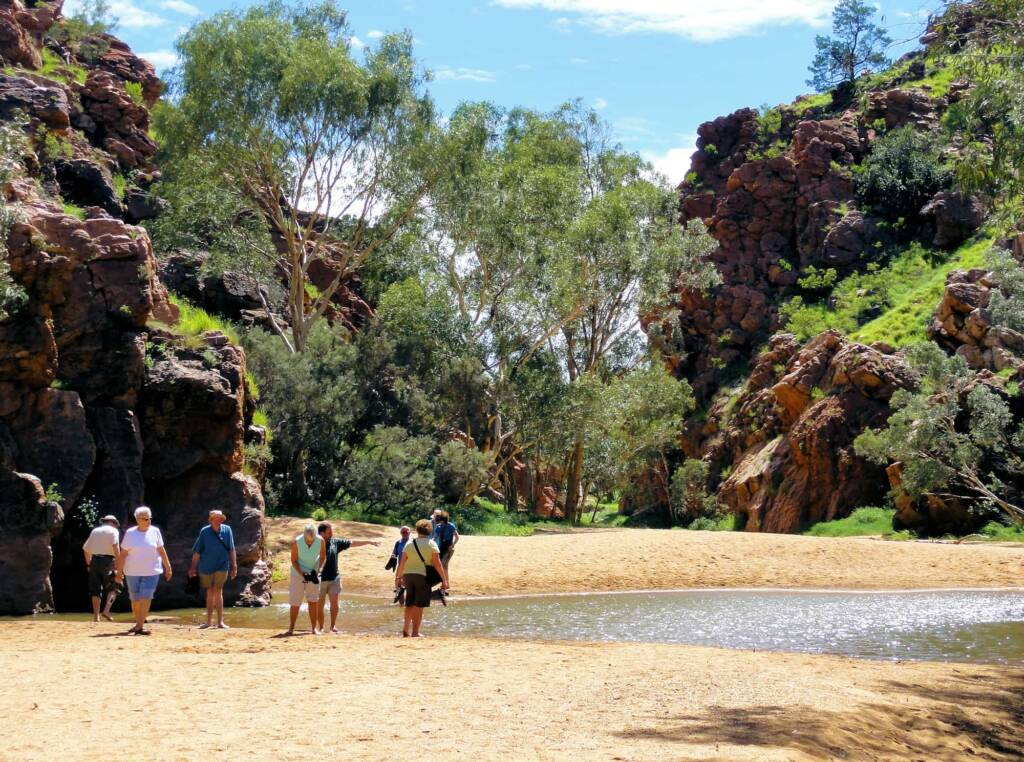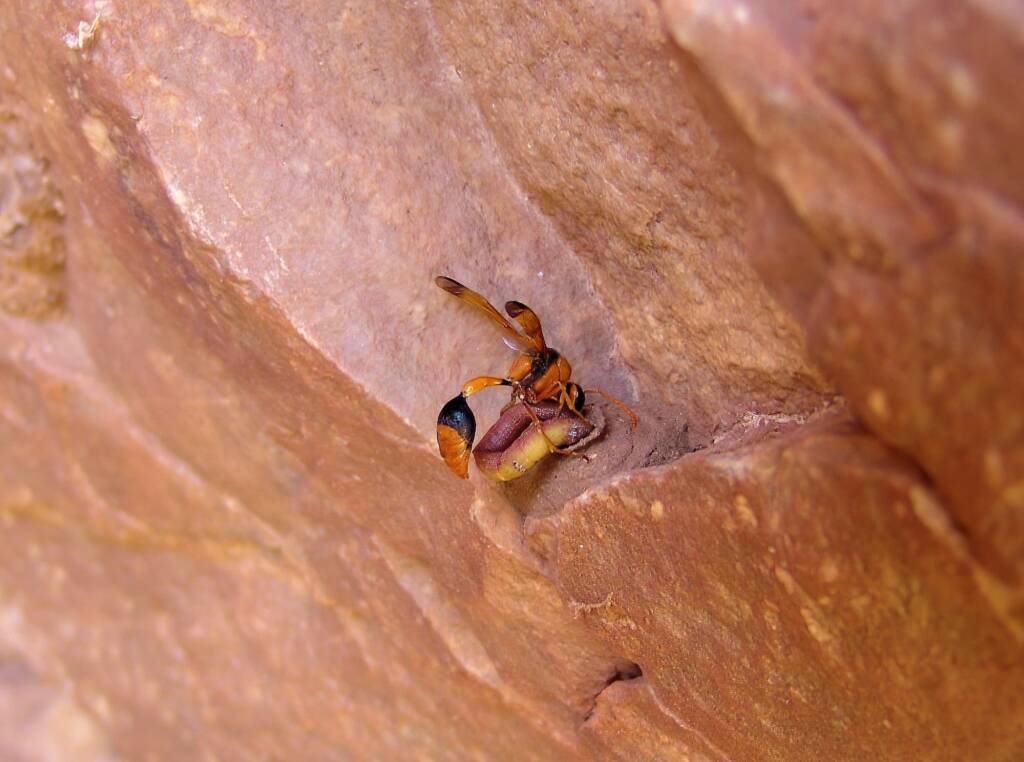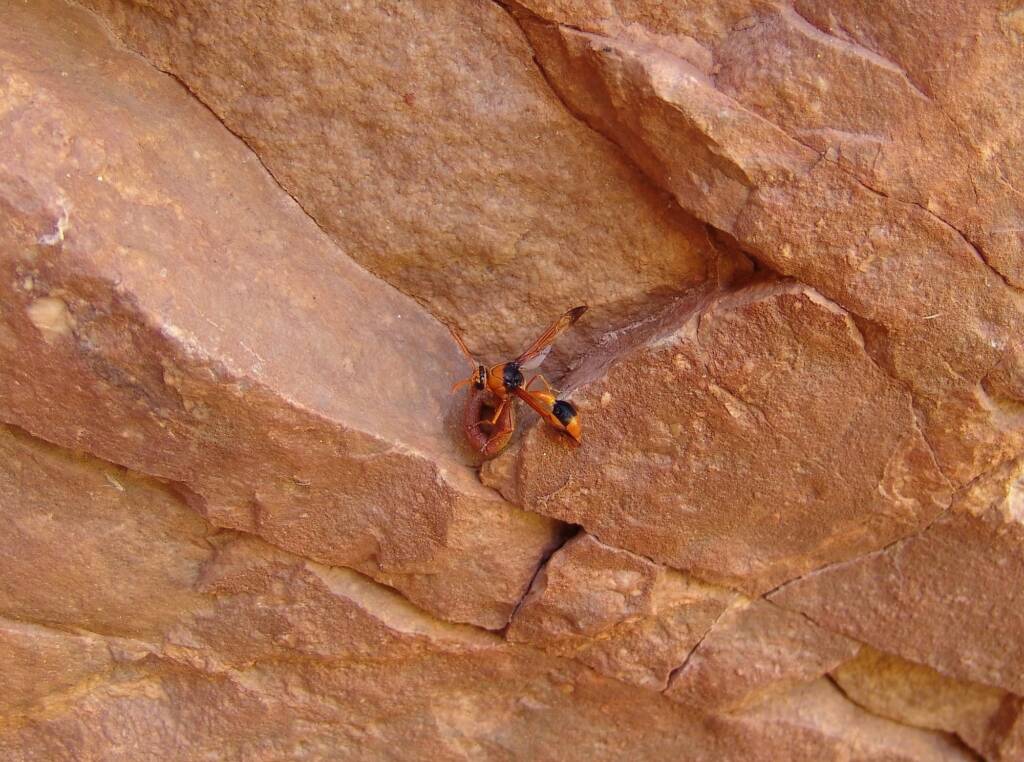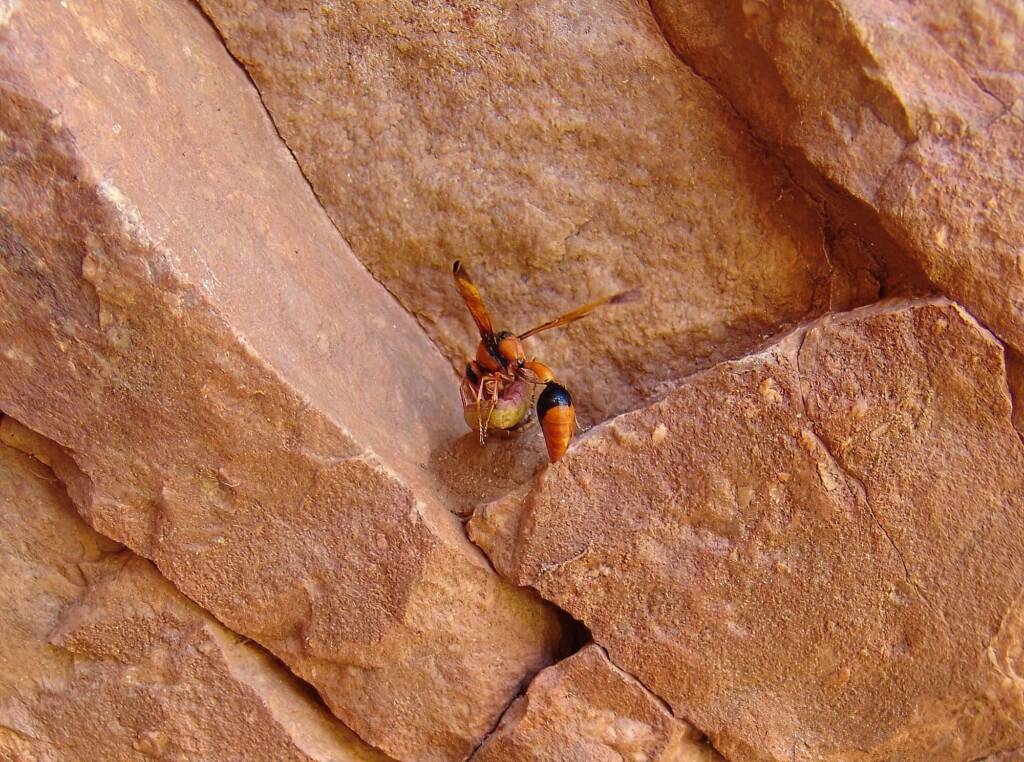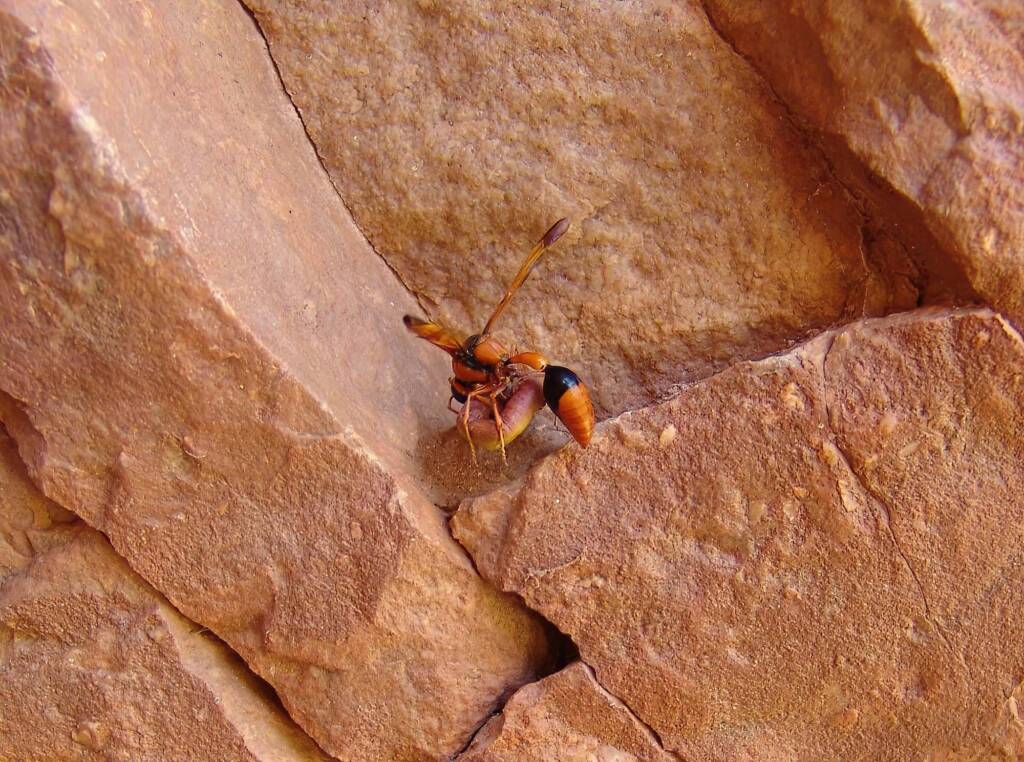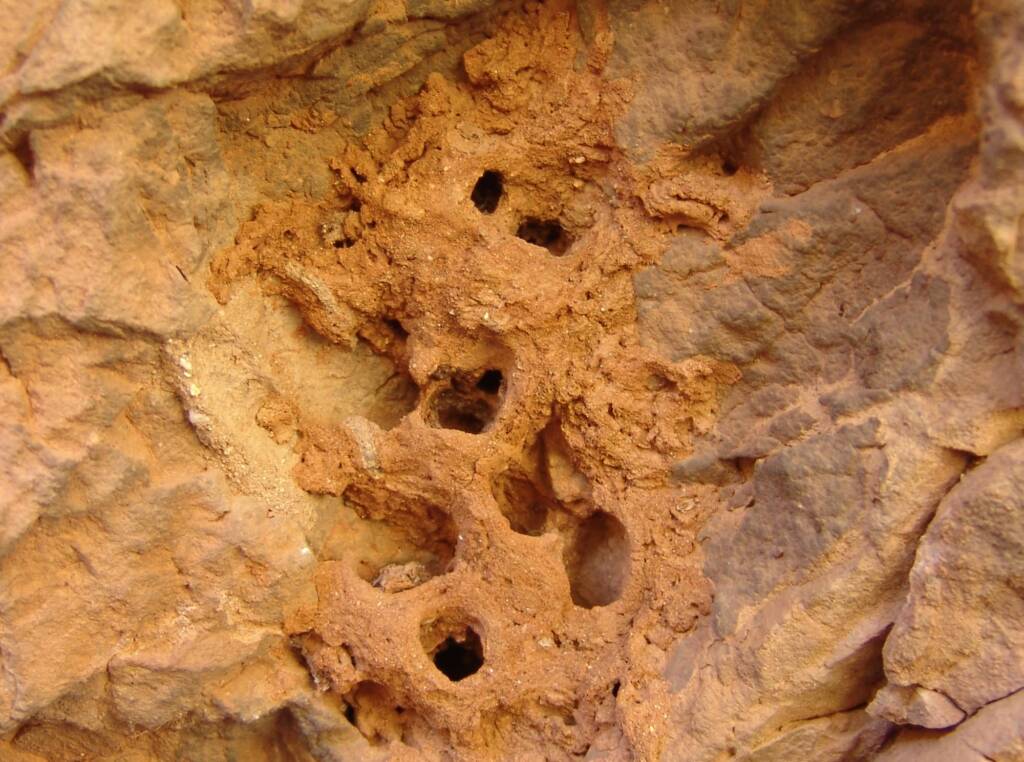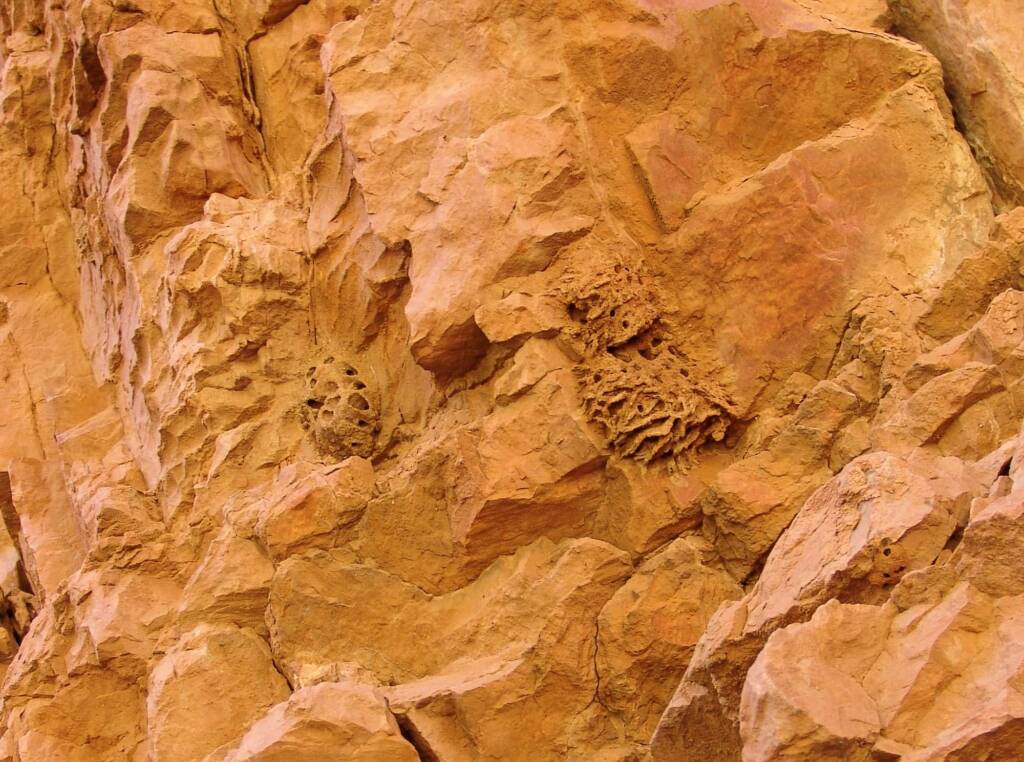Yeperenye / Emily and Jessie Gaps Nature ParkApple Bush (Emily & Jessie Gaps) Sacred Kingfisher (Emily & Jessie Gaps)
The small Gaps in the Heavitree Range are the start of your exploration of the magnificent East MacDonnell Ranges. Located just 10 km east of Alice Springs, there is a walking trail, the Yeperenye Trail, that links the two gaps of Anthwerrke (Emily Gap) and Atherrke (Jessie Gap), providing a great way to explore and view this magnificent part of the East MacDonnell Ranges.

Emily and Jessie Gaps in the Heavitree Range, are important spiritual sites to the Eastern Arrernte Aboriginal People. Visitors to this part of the Heavitree Range can see Aboriginal rock art that are part of this significant dreamtime story.
With many places in the landscape associated with the same dreamtime story, and together forming a ‘dreaming trail’, Emily and Jessie Gaps are part of this ‘Caterpillar Dreaming’ of the Central Arrernte Aboriginal people.
Eastern Arrernte is sometimes referred to as Central Arrernte and vice versa. However, whilst Eastern Arrernte are those from the Arrernte lands east of Alice Springs, Central Arrernte are those from the township of Alice Springs.1
With its gorge scenery and art site Emily Gap is probably the most significant, as this is where the caterpillar beings of Mparntwe (Alice Springs) originated. These caterpillars formed Emily Gap and many of the topographic features around Alice Springs, then radiated out to the edge of the Simpsons Desert.
The Three Caterpillars: Yeperenye, Ntyarlke and Utnerrengatye

Image Source: Park signage and Parks and Wildlife Service, Northern Territory
The Three Caterpillars
These stylised paintings on the rock face are of the caterpillars Yeperenye, Ntyarlke and Utnerrenbatye, who are beings of great significance for the Arrernte people. At this spot Intwailuka, an ancestral hero, is said to have cooked and eaten caterpillars on his Dreamtime journey.

Ochre and Lime
Red ochre and white lime were crushed into powder, mixed with animal fat and applied to the rock surface by the artist.
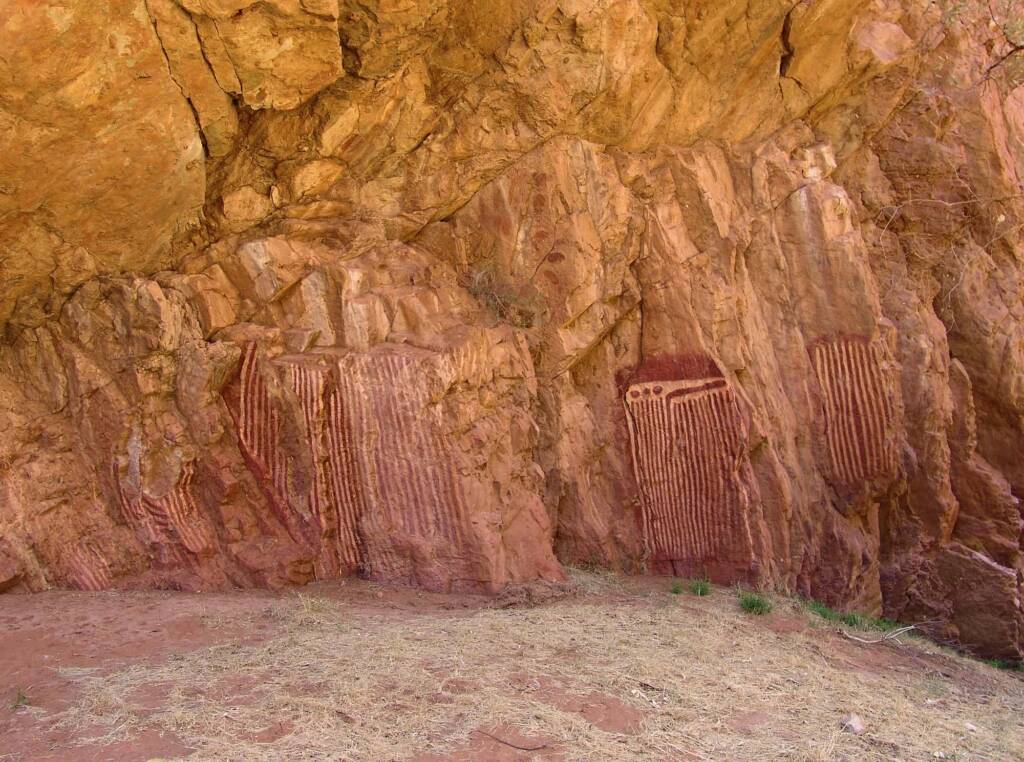
Protecting our Heritage
Each year these paintings become more fragile cue to the effects of heat, wind and rain. Even the light touch of a human hand speeds this process.
Help preserve the paintings by keeping behind the barrier.
Source: Park signage and Parks and Wildlife Service, Northern Territory
Yeperenye Trail
The Anthwerrke (Emily Gap) and Atherrke (Jessie Gap) walking trail was officially opened on 28 July 2021. Just over seven-kilometre, this walking and cycling track, connects Anthwerrke (Emily Gap) and Atherrke (Jessie Gap) in the East MacDonnell Ranges.
More than 30 Eastern Arrernte traditional owners built the trail entirely by hand, following the natural contours of the landscape.
“I’d like to welcome tourists to see what we’ve done with our bare hands and what we’ve created out here,” traditional owner Grant Wallace said.
“Country is important. Look after it, keep it strong.“

The park is accessible all year, with the cooler months (April to September) being the most popular times to visit. Whilst the gaps are normally dry, after significant rain in the region, the dry creeks and rivers will flow, filling the gaps and waterholes.
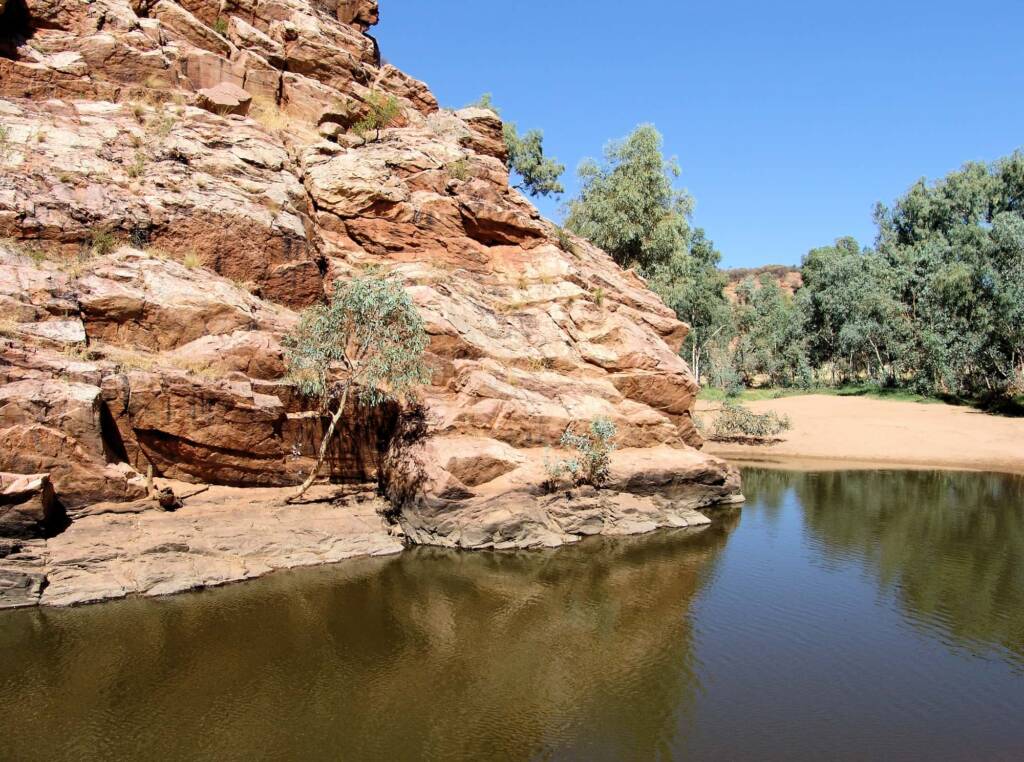
Yeperenye / Emily and Jessie Gaps Nature Park facilities including information signs, fire pits (at Jessie Gap only), public toilets, picnic area, short walks.
Source: Park signage & NT Parks and Reserves – Yeperenye / Emily and Jessie Gaps Nature Park2
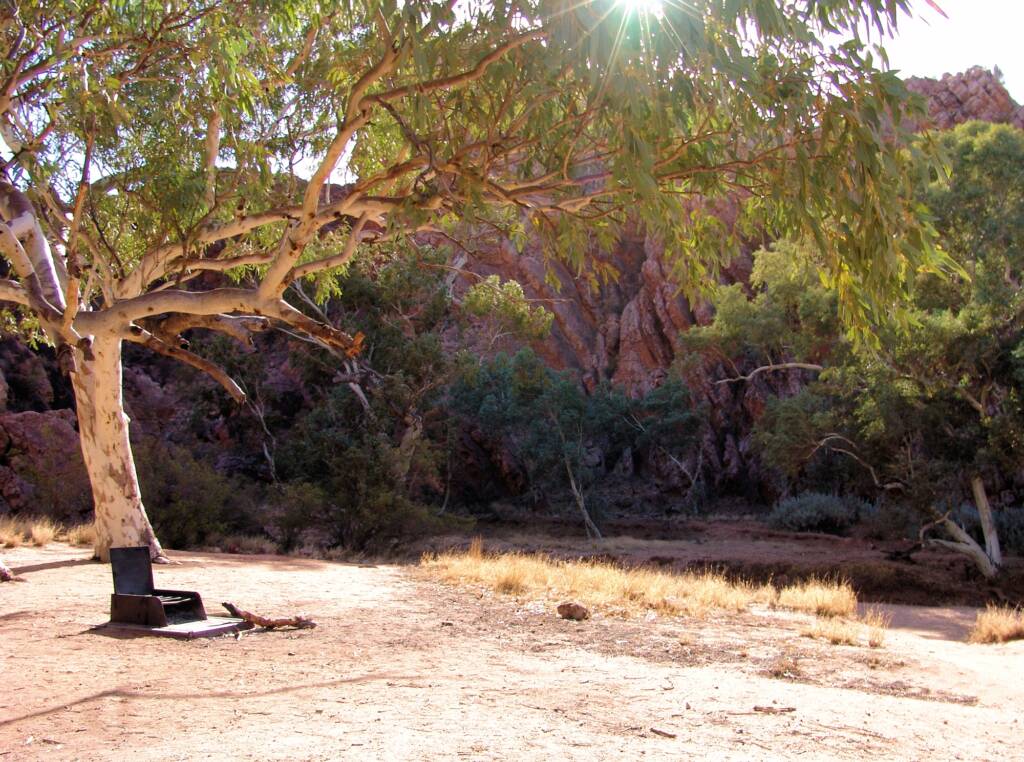
Emily Gap
Anthwerrke, the Arrernte name for Emily Gap, is a traditional site of major importance. It is part of the storyline for the Three Caterpillars: Yeperenye, Ntyarlke and Utnerrengatye, which are ancestral beings for the Alice Springs area. Arrernte people conceived in Alice Springs consider themselves direct descendants of these Caterpillar ancestors.
The Caterpillar story is recorded in a gallery of rock paintings within the gap.
The name Emily Gaps first appeared in the early 1870s on maps of central Australia by W.W. Mills, a surveyor employed on the Overland Telegraph Line. There is no positive trace of why this name was chosen.
Please note: during wetter seasons the Gap fills with water and you may be unable to view the paintings.
Source: Park signage and Parks and Wildlife Service, Northern Territory2
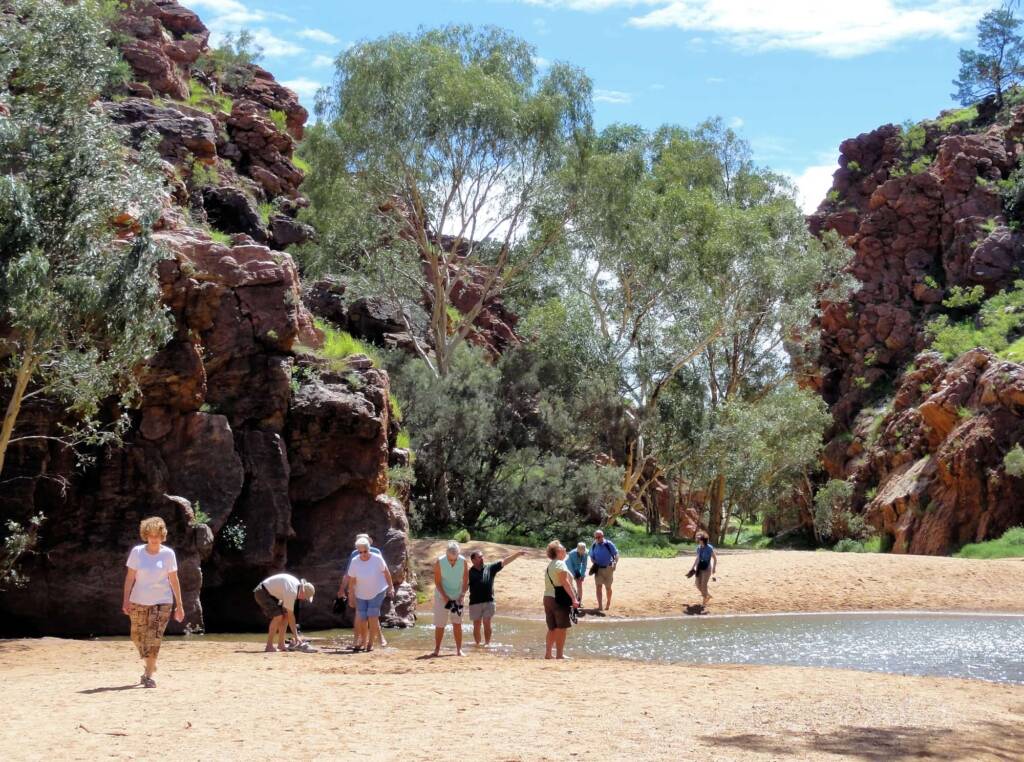
Jessie Gap
• Atherrke is the Arrernte name for Jessie Gap. Jessie and Emily Gaps are associated with storylines for the Three Caterpillars: Yeperenye, Ntyarlke and Utnerrengatye.
The Emu story line also has a relationship with this site. The white sand against the ridge to the east of this gap represents the emu fat.
The name Jessie Gap first appeared in the early 1870s on maps of central Australia by W.W. Mills, a surveyor employed on the Overland Telegraph Line. There is no positive trace of why this name was chosen.
Source: Park signage and Parks and Wildlife Service, Northern Territory2
Please note that these gaps are normally dry, with water only being present deep under the sand. The opportunity to see water is usually only after there is significant rain in the region,
When the Yeperenye caterpillars emerge after rain, they spend all their time feeding on a sticky groundcover called Tar Vine (Boerhavia coccinea). They feed on the tar-vine, growing and moulting, before cocooning underground to emerge as moths.
The tar-vine ayepe, and arenye means belong to… the caterpillars are from the ayepe, and so they call them Ayepe-arenye.”
The Three Caterpillars, Yeperenye, Ntyarlke and Utnerrengatye belonging to different species: Hyles livornicoides (Yeperenye), Hippotion celerio (Ntyarlke), and Coenotes eremophilae (Utnerrengatye).

As you wander around and through the gaps, keep your eyes open for the flora and fauna. From kangaroos and wallabies, to some of the birds that feed and nest in the area. The magnificent river red gums and eucalypts to native flowers. The presence of the Wild Passionfruit, may be harbouring some of the Caper White Butterflies caterpillars that are found feeding on them.
There will of course be other insects including the Potter Wasps (also referred to as Mud Wasps). Their nest are made from the sand and clay in the area, and are filled with caterpillars to feed the young in the mud nest.
If you look along the rock face, under ledges and sheltered spots, you can often find their mud nests. Some will be vacant, as the young wasps would have left the nest. More often then not, the mud nest will be added to over time by the returning wasp, or even the next generation of wasps.
Check out our Insect section with information about Potter Wasps and the different types of mud nest made by the different wasp species – Australian Mud Nest Wasps.
Other insects, such as native bees may also take up residence in the vacated holes of the mud nest to lay their eggs. You can find information about our native bees in our Bees section, including the Golden-browed Resin Bee (Megachile aurifrons) that have been documented nesting in vacated mud nests of potter wasps.

Footnote & References
- Arrernte people, https://en.wikipedia.org/wiki/Arrernte_people (last visited Apr. 13, 2022)
- Yeperenye / Emily and Jessie Gaps Nature Park, NT Government, Parks and reserves, https://nt.gov.au/parks/find-a-park/yeperenye-emily-jessie-gaps-nature-park
- Yeperenye Trail – Jesse Gap to Emily Gap – Near Alice Springs NT, by Steven, 24 October 2021, Retirement On Tour, https://retirementontour.com/2021/10/yeperenye-trail-jesse-gap-to-emily-gap-near-alice-springs-nt/
- Traditional owners build, open Yeperenye tourism and recreation trail at sacred site near Alice Springs, by Saskia Mabin, 29 July 2021, ABC News, https://www.abc.net.au/news/2021-07-29/yeperenye-trail-bushwalking-macdonnell-ranges-central-australia/100333554
- Traditional owners open Yeperenye walking trail near Alice, Great Walks, https://www.greatwalks.com.au/news/traditional-owners-open-yeperenye-walking-trail-near-alice
- Anthwerrke (Emily Gap) and Atherrke (Jessie Gap) walking trail officially opened, by Paul Wiles, 28 July 2021, CAAMA, https://www.caama.com.au/2021/07/28/anthwerrke-emily-gap-and-atherrke-jessie-gap-walking-trail-officially-opened/
Yeperenye / Emily and Jessie Gaps Nature ParkApple Bush (Emily & Jessie Gaps) Sacred Kingfisher (Emily & Jessie Gaps)
East MacDonnell RangesTrephina Gorge Nature Park Yeperenye / Emily and Jessie Gaps Nature Park
MacDonnell RangesEast MacDonnell Ranges West MacDonnell Ranges Tjoritja West MacDonnell National Park

